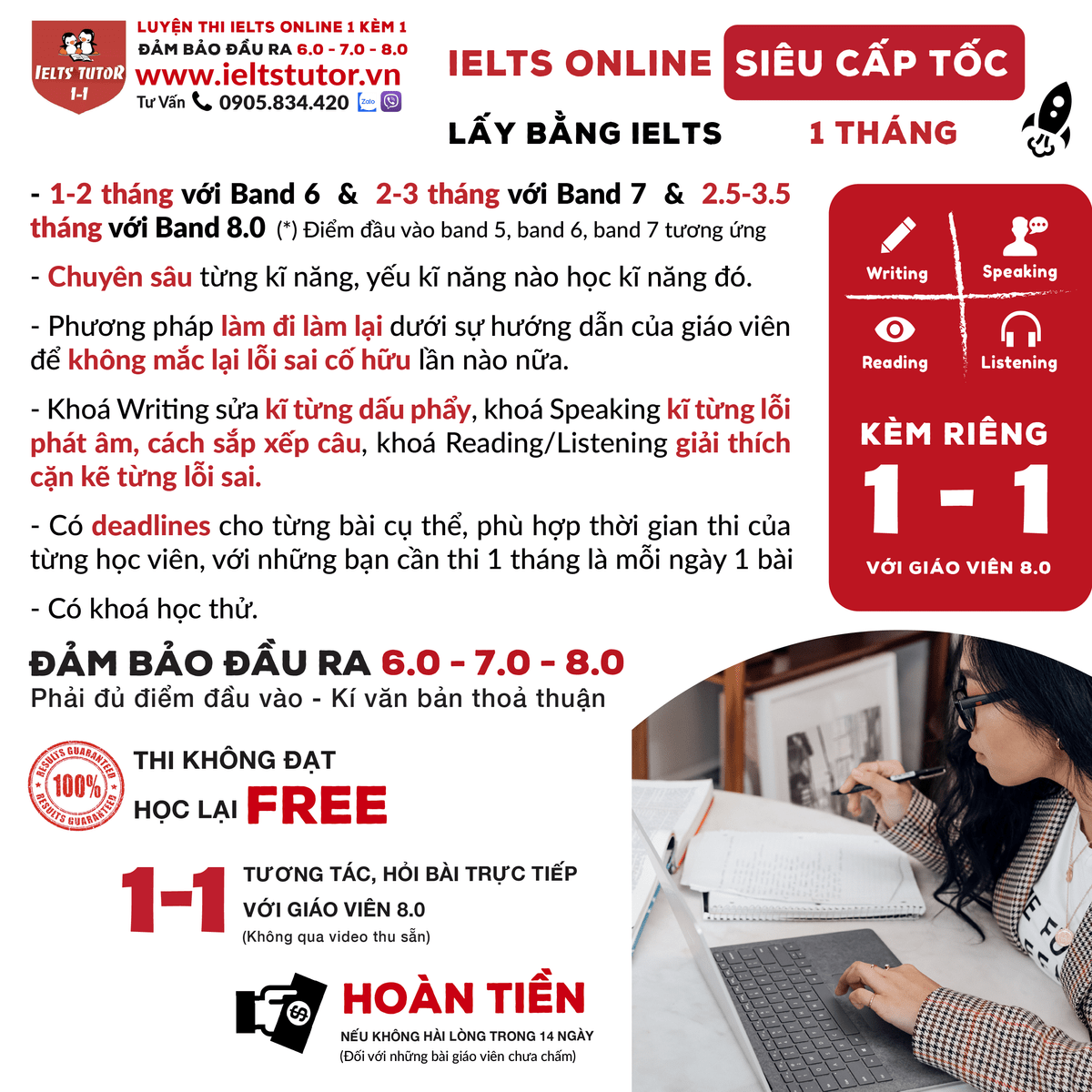IELTS TUTOR cung cấp 🔥Portrait of Bianca Sforza - Leonardo da Vinci's Lost Masterpiece Answers with location - Đề luyện IELTS READING- Làm bài online format computer-based, kèm đáp án, dịch & giải thích từ vựng - cấu trúc ngữ pháp khó
I. Kiến thức liên quan
II. Làm bài online (kéo xuống cuối bài blog để xem giải thích từ vựng & cấu trúc cụ thể hơn)
📩 MN AI CHƯA CÓ ĐÁP ÁN FORECAST QUÝ MỚI PART 1-2-3 NHẮN ZL 0905834420 IELTS TUTOR GỬI FREE HẾT NHA
III. Portrait of Bianca Sforza - Leonardo da Vinci's Lost Masterpiece: Đề luyện IELTS READING (IELTS Reading Practice Test)
READING PASSAGE 1
You should spend about 20 minutes on Questions 1-13, which are based on Reading Passage 1.
Portrait of Bianca Sforza
Leonardo da Vinci's Lost Masterpiece
In 2010, a discovery shook the art world. A portrait of a young woman, purchased at a small auction in Switzerland for a modest sum, was identified by some experts as a previously unknown work by Leonardo da Vinci. The painting, known as La Bella Principessa, depicts Bianca Sforza, the illegitimate daughter of Ludovico Sforza, Duke of Milan. If authentic, it would not only expand da Vinci's already extraordinary oeuvre, but also change our understanding of his work during the late 15th century.
The portrait's journey into the limelight began when Canadian art collector Peter Silverman acquired it. At first glance, the delicate image seemed like a typical Renaissance portrait. However, certain details—the subtle shading of the sitter's face, the exquisite treatment of her hair, and the ethereal quality of the gaze—suggested a hand far more skilled than the German artist to whom it had previously been attributed. Suspecting something greater, Silverman enlisted the help of leading da Vinci expert Martin Kemp.
Kemp, emeritus professor of art history at Oxford University, had spent decades studying Leonardo's techniques. Upon examining the portrait, he was struck by several features. The sitter's hairstyle and costume matched Milanese fashion of the 1490s, and the fine lines of the drawing displayed Leonardo's characteristic sfumato technique—the subtle blending of tones without abrupt edges. Moreover, the use of vellum—a material made from calfskin—was consistent with Leonardo's known experiments during his Milanese period.
To bolster the claim of authenticity, scientific tests were conducted. Multispectral imaging revealed a series of faint fingerprint marks on the surface of the portrait. These prints, made in the paint layer before it dried, were compared with known fingerprints from Leonardo's notebooks. Astonishingly, there appeared to be a partial match, suggesting that Leonardo himself might have handled the work. Further analysis of the pigments confirmed that they were consistent with materials available in the late 15th century.
Nevertheless, the attribution remains controversial. Critics argue that the portrait lacks the dynamism and innovation typical of Leonardo's other works. Carmen Bambach, curator at the Metropolitan Museum of Art, is among those who remain unconvinced. She suggests that, while the portrait is of high quality, it could have been created by one of Leonardo's pupils or a talented contemporary imitator. Such doubts are not uncommon in the world of Old Master attributions, where connoisseurship and scientific evidence often clash.>> Form đăng kí giải đề thi thật IELTS 4 kĩ năng kèm bài giải bộ đề 100 đề PART 2 IELTS SPEAKING quý đang thi (update hàng tuần) từ IELTS TUTOR
Adding to the intrigue is the identity of the sitter. Historical records indicate that Bianca Sforza was married at a young age to Galeazzo Sanseverino, a prominent Milanese courtier. Tragically, she died shortly thereafter at the age of 14, possibly from childbirth complications. The portrait's subtle melancholy, combined with the youthful features of the sitter, supports the theory that it may have been commissioned to commemorate her short life.
The debate surrounding La Bella Principessa reflects broader challenges in art authentication. As technology advances, tools such as carbon dating, digital microscopy, and chemical analysis provide new insights. Yet they rarely offer conclusive answers. In the case of this portrait, scientific findings, historical context, and stylistic analysis each tell part of the story, but none can definitively declare Leonardo's authorship.
For now, La Bella Principessa remains both a tantalising possibility and a symbol of art history's enduring mysteries. Whether or not it is confirmed as a work by Leonardo, the portrait has captured the imagination of scholars and the public alike. As Martin Kemp once remarked, "Even if we can never be 100 percent certain, the dialogue between art and science has brought us closer than ever before to understanding this beautiful, enigmatic figure."
Questions 1-5 (Yes/No/Not Given)
Do the following statements agree with the information given in Reading Passage 1?
Write:
YES if the statement agrees with the claims of the writer.
NO if the statement contradicts the claims of the writer.
NOT GIVEN if there is no information on this.
The portrait La Bella Principessa was initially believed to be the work of a German artist.
Martin Kemp was the first person to suggest that the portrait might be by Leonardo da Vinci.
Leonardo da Vinci frequently used vellum for his paintings during his time in Milan.
The fingerprint marks found on the portrait perfectly matched those in Leonardo’s notebooks.
Historical records confirm that Bianca Sforza died due to an illness.
Questions 6-9 (Multiple Choice)
Choose the correct letter, A, B, C, or D.
What first made Peter Silverman suspect that the portrait might be a Leonardo da Vinci?
A. The high price paid at the auction
B. The exceptional quality of shading and details
C. A signature found on the back of the painting
D. The subject’s resemblance to other da Vinci worksAccording to Martin Kemp, what technique in the portrait is characteristic of Leonardo?
A. The use of bright, contrasting colors
B. The sfumato blending of tones
C. The precise outlines of facial features
D. The heavy application of paintWhy do some experts doubt that the portrait is by Leonardo?
A. It was painted on paper instead of wood.
B. It lacks the innovation seen in his other works.
C. The pigments used were not available in the 15th century.
D. The subject was not a member of the Sforza family.What does the passage suggest about the portrait’s connection to Bianca Sforza?
A. It was definitely painted after her death.
B. It may have been a memorial piece.
C. It was commissioned by her husband.
D. It was hidden for centuries before being discovered.
Questions 10-13 (Gap-Filling / Sentence Completion)
Complete the sentences below.
Write NO MORE THAN TWO WORDS from the passage for each answer.
The portrait was purchased at an auction in __________ before being identified as a possible da Vinci.
Scientific tests revealed fingerprint marks made in the __________ before it dried.
Critics argue that the portrait could have been painted by one of Leonardo’s __________ or an imitator.
The debate over the portrait highlights the challenges of __________ in art history.
IV. Dịch bài đọc Portrait of Bianca Sforza - Leonardo da Vinci's Lost Masterpiece
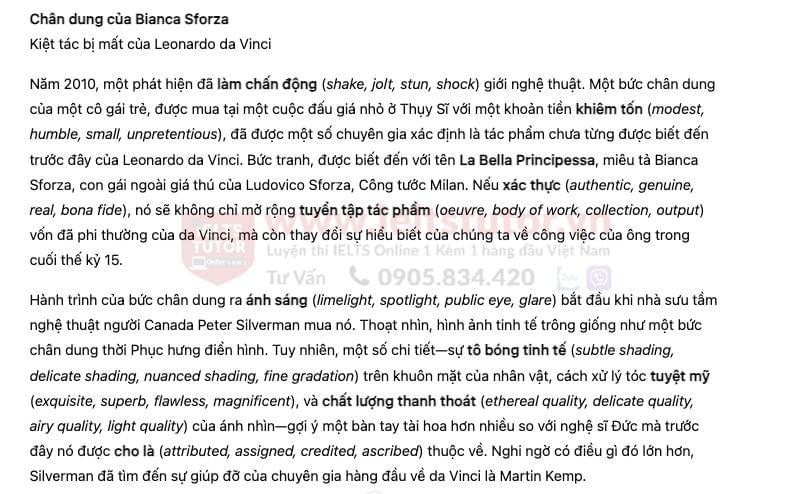
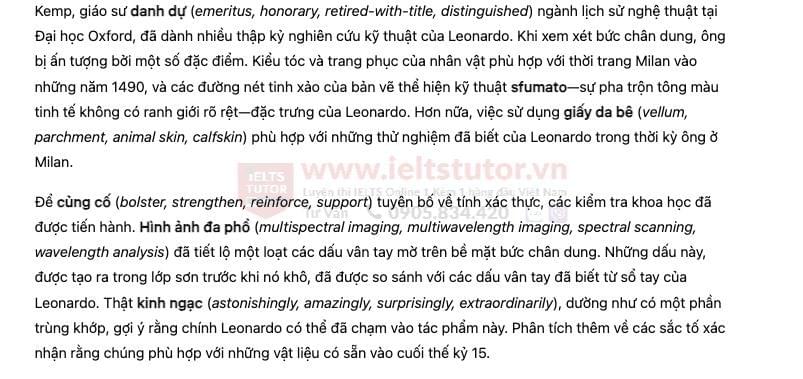
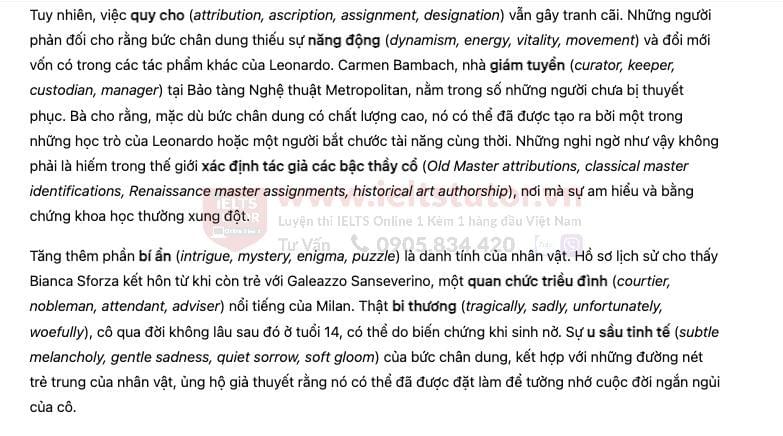
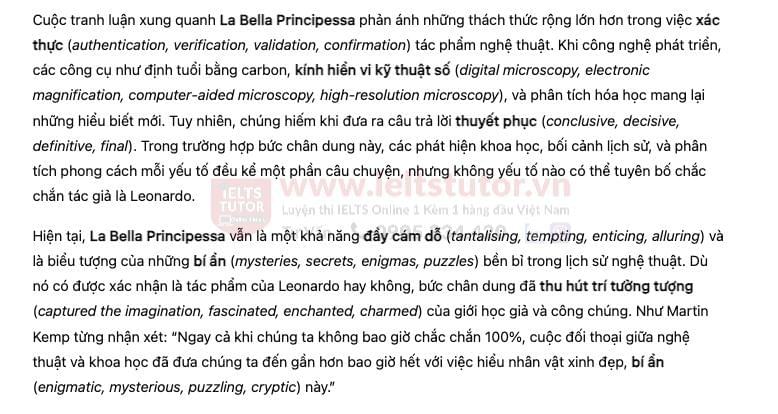
V. Giải thích từ vựng Portrait of Bianca Sforza - Leonardo da Vinci's Lost Masterpiece
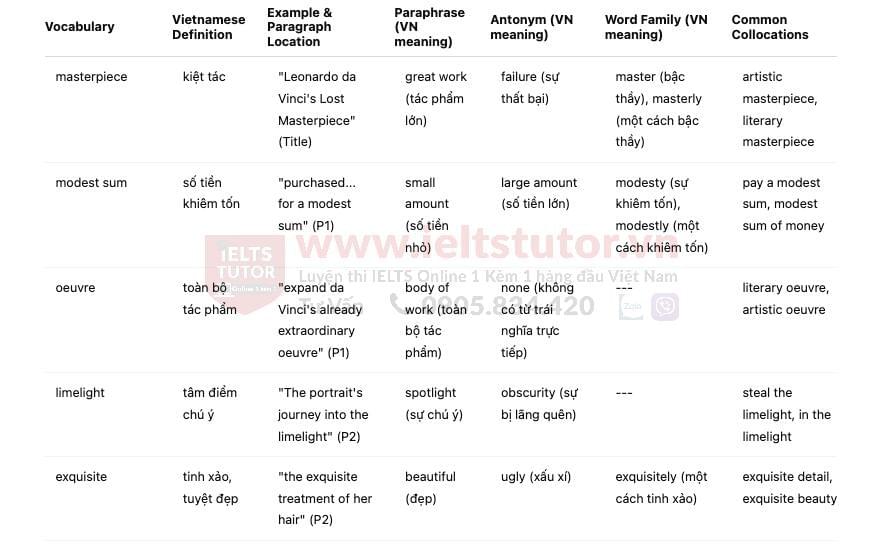
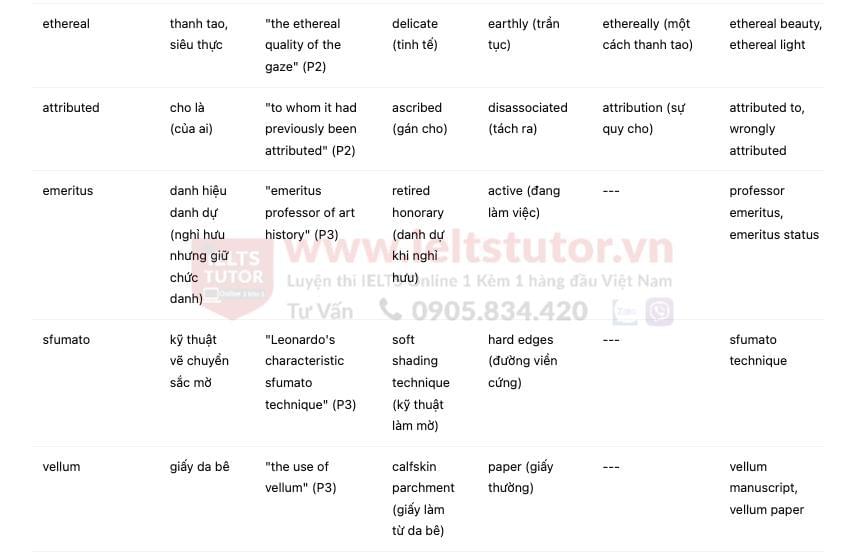
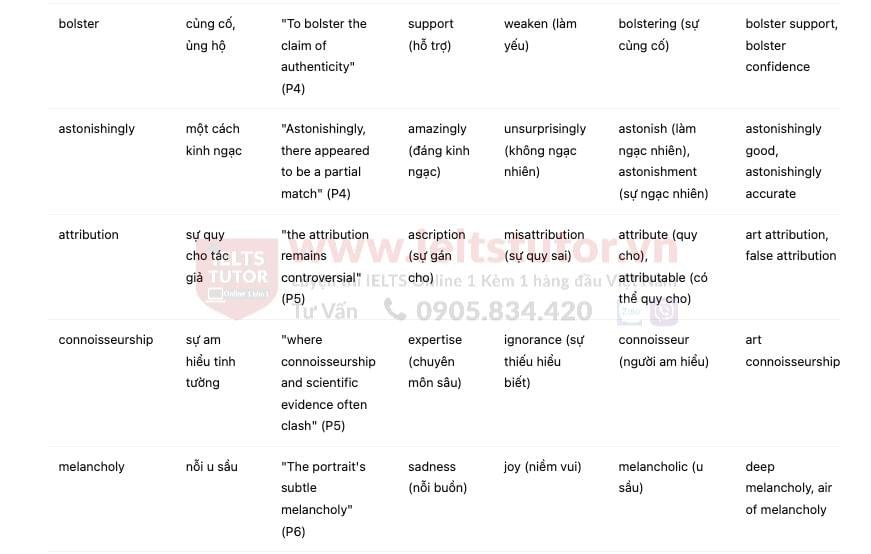

VI. Giải thích cấu trúc ngữ pháp khó Portrait of Bianca Sforza - Leonardo da Vinci's Lost Masterpiece
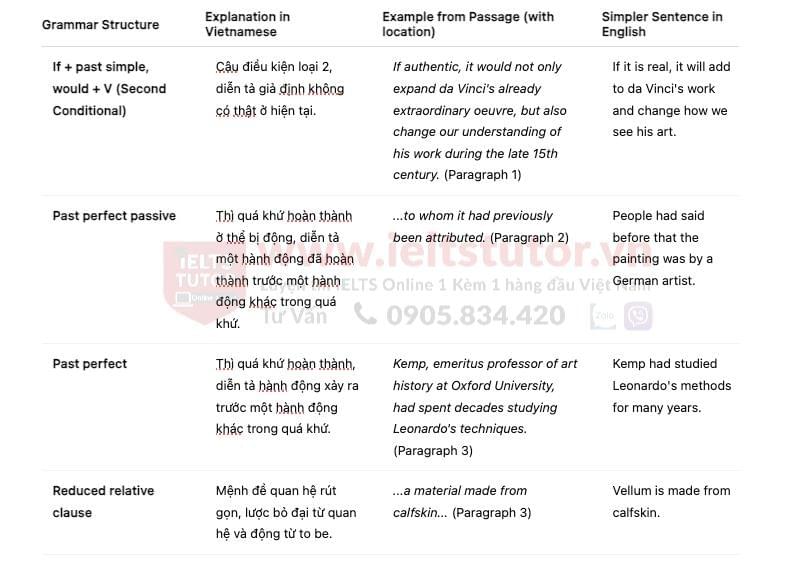
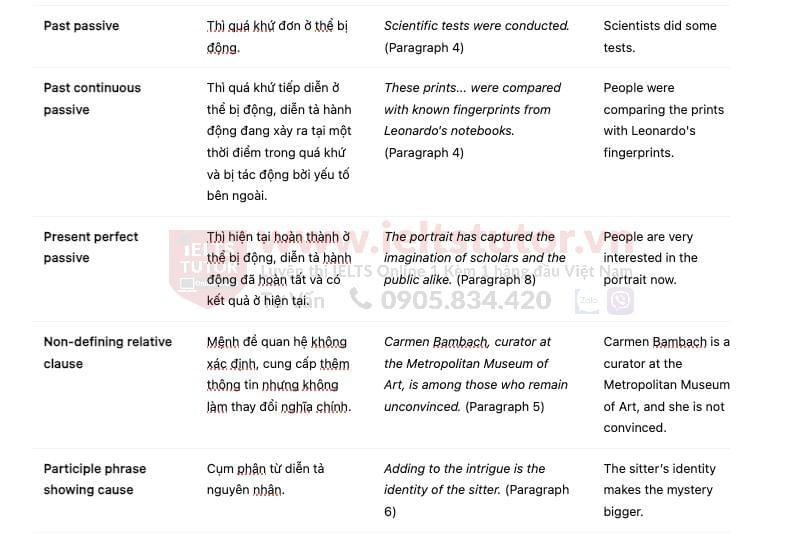
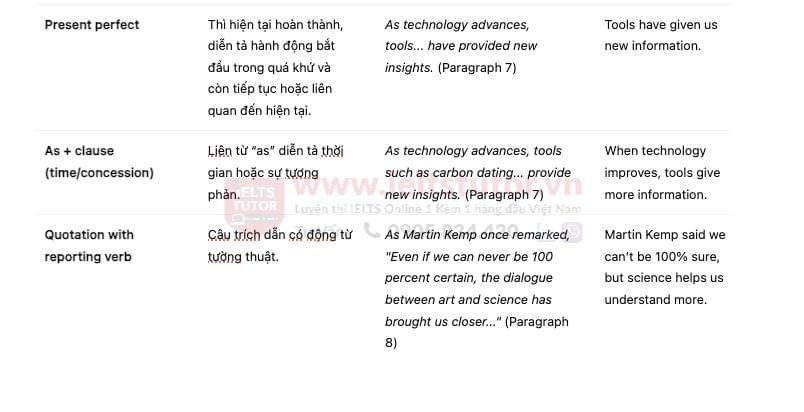
VII. Đáp án Violins and very cold weather – a hypothesis
YES
NO
YES
NO
NOT GIVEN
B
B
B
B
Switzerland
paint layer
pupils
art authentication
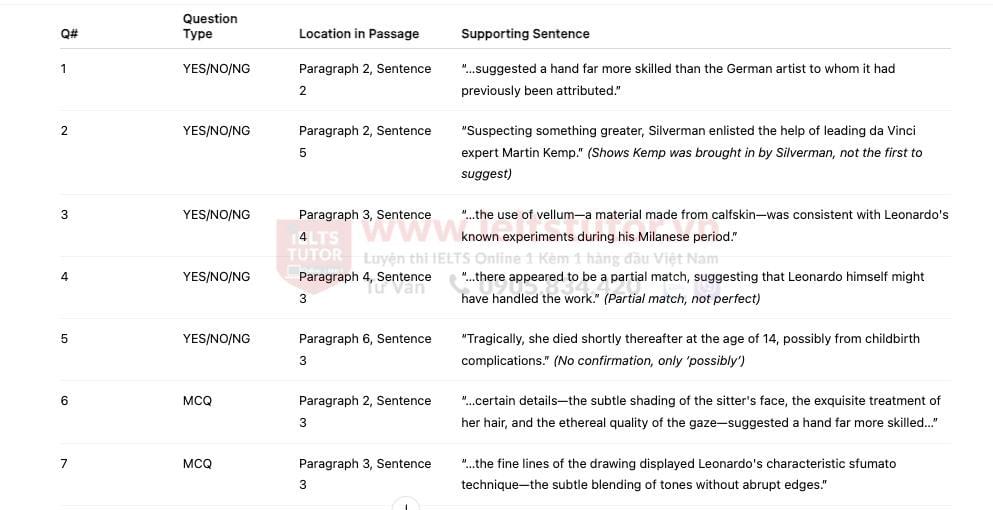
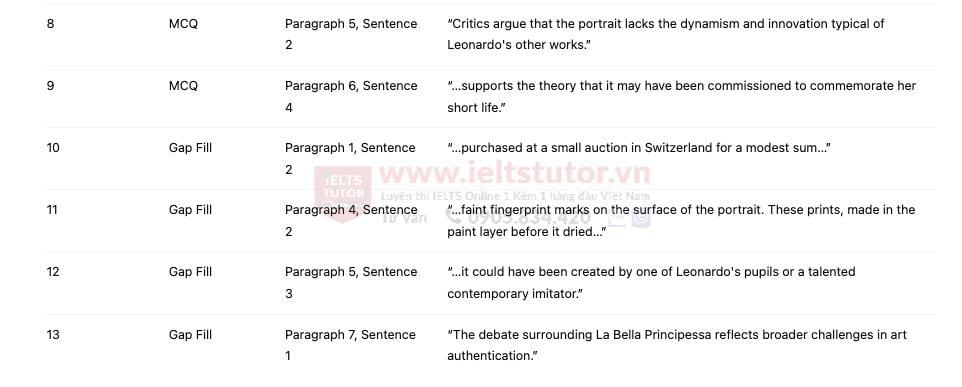
📩 MN AI CHƯA CÓ ĐÁP ÁN FORECAST QUÝ MỚI PART 1-2-3 NHẮN ZL 0905834420 IELTS TUTOR GỬI FREE HẾT NHA

Các khóa học IELTS online 1 kèm 1 - 100% cam kết đạt target 6.0 - 7.0 - 8.0 - Đảm bảo đầu ra - Thi không đạt, học lại FREE
>> Thành tích học sinh IELTS TUTOR với hàng ngàn feedback được cập nhật hàng ngày
